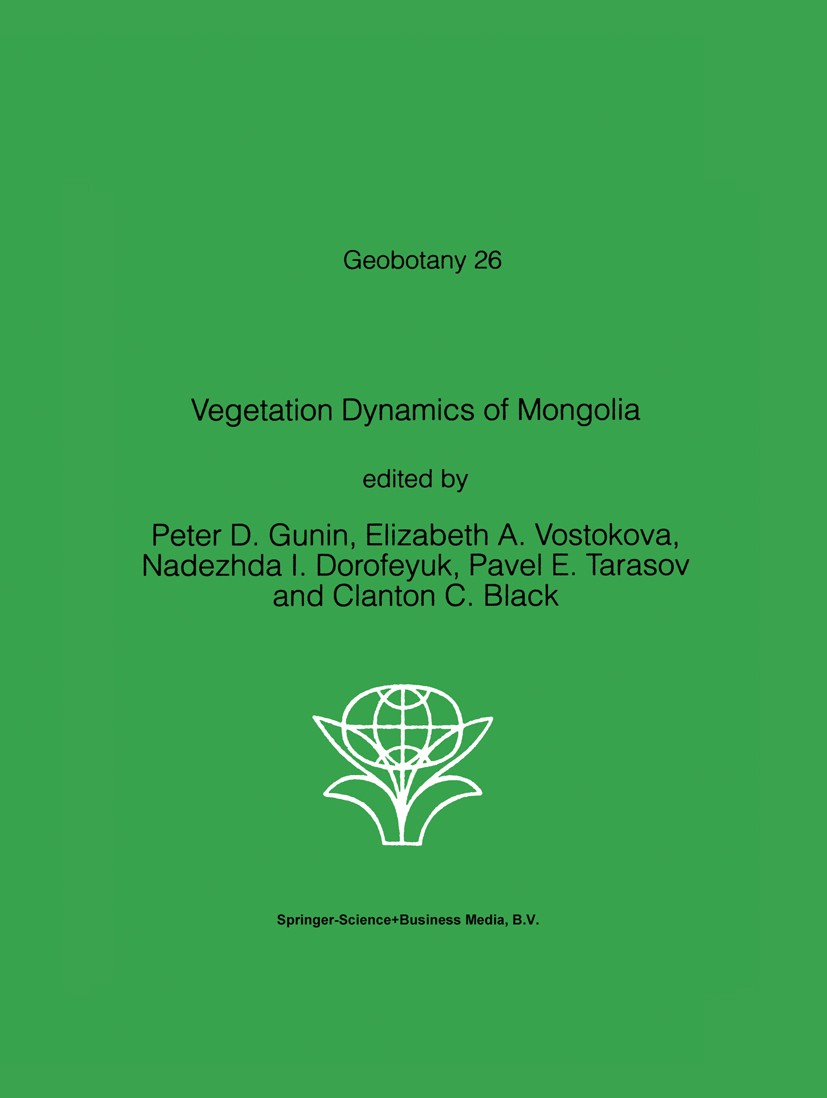| 书目名称 | Vegetation Dynamics of Mongolia | | 编辑 | Peter D. Gunin,Elizabeth A. Vostokova,Clanton C. B | | 视频video | http://file.papertrans.cn/981/980895/980895.mp4 | | 丛书名称 | Geobotany | | 图书封面 |  | | 描述 | Mongolia is an expansive land-locked country, tilted bytectonic forces to the North, that experiences extremes of continentalclimate. Moisture-carrying wind currents are scarce so that the landhas extended highs and lows in its environment. Culturally the peopleare mostly nomadic, having been sustained for centuries by an economybased on domestic livestock grazing. There is a saying that, `As thenoses go, so goes Mongolia‘, referring to the domesticated grazingnoses of sheep, goats, camels, yaks or horses, and wild ungulates suchas gazelles. The vast fenceless steppes of Mongolia furnish thevegetation for grazing. With such extremes in climate it is clear thatthe vegetation must be resilient and dynamic to cope with the dictatesof its extremely harsh environments. .Pollen profiles from lakes, plant macrofossils and other data over thelast 15,000 years show the dynamic nature of Mongolian vegetation.Currently Mongolian society is experiencing much human-driven economicdevelopment which increases pressure on its vegetation. The GreatKhural Laws of 1995 forcefully addressed such environmental concernswith the expanded establishment of National Reserves and Parks. Butcontinued effort a | | 出版日期 | Book 1999 | | 关键词 | Rain; Shrub; Tree; ecosystem; ecosystems; environment; vegetation; ecotoxicology; hydrogeology | | 版次 | 1 | | doi | https://doi.org/10.1007/978-94-015-9143-0 | | isbn_softcover | 978-90-481-5174-5 | | isbn_ebook | 978-94-015-9143-0 | | copyright | Springer Science+Business Media Dordrecht 1999 |
The information of publication is updating

|
|
 |Archiver|手机版|小黑屋|
派博传思国际
( 京公网安备110108008328)
GMT+8, 2025-12-27 06:23
|Archiver|手机版|小黑屋|
派博传思国际
( 京公网安备110108008328)
GMT+8, 2025-12-27 06:23


